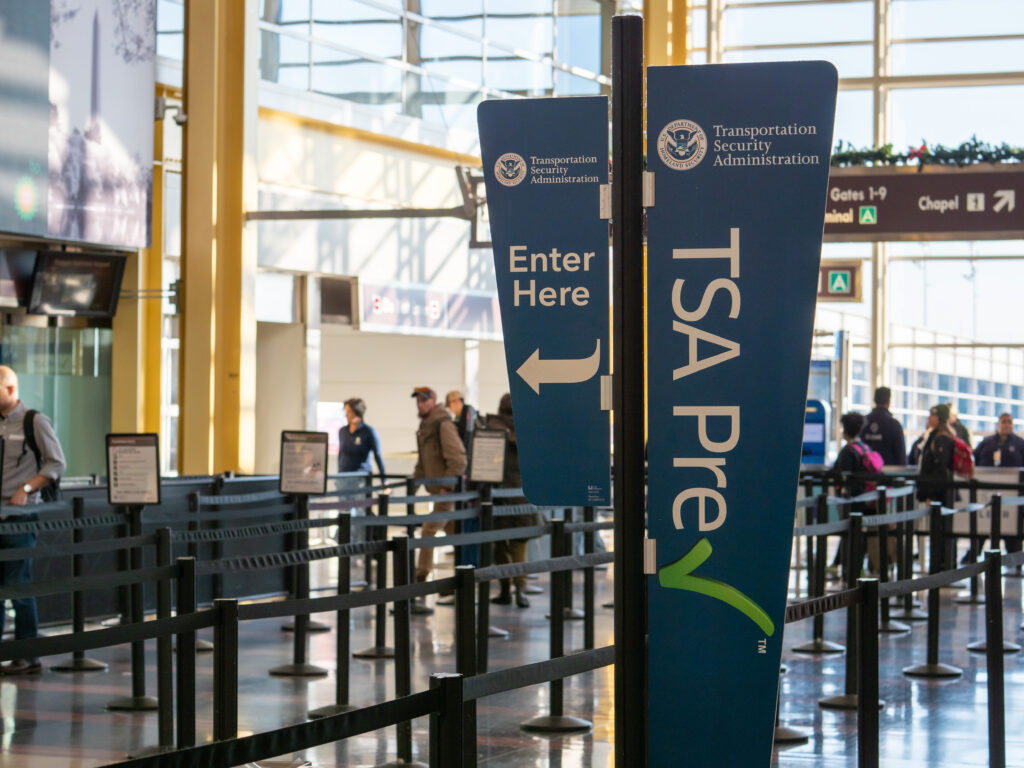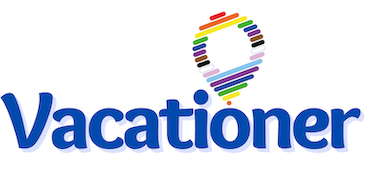TSA Security Tips for the Expected Busy Holiday Season
The Transportation Security Administration (TSA) has screened a record number of passengers this year and anticipates airport security checkpoints nationwide will be busier than ever this holiday travel season.
The season kicks off with Thanksgiving travel, which begins Friday, Nov. 17, and concludes Tuesday, Nov. 28. During the 12 days, TSA expects to screen 30 million passengers. Historically, the three busiest travel days are the Tuesday and Wednesday before Thanksgiving and the Sunday afterward. TSA is projecting to screen 2.6 million passengers on Tuesday, Nov. 21; 2.7 million passengers on Wednesday, Nov. 22 and 2.9 million passengers on Sunday, Nov. 26, which will likely be the busiest travel day.
“We expect this holiday season to be our busiest ever. In 2023, we have already seen seven of the top 10 busiest travel days in TSA’s history,” said TSA Administrator David Pekoske. “We are ready for the anticipated volumes and are working closely with our airline and airport partners to make sure we are prepared for this busy holiday travel season. We will also do our best to maintain wait time standards of under 10 minutes for TSA PreCheck® lanes and under 30 minutes for standard screening lanes. I am grateful for our dedicated employees who continue to remain vigilant and focused on the mission during this holiday travel season and beyond.”

TSA has recorded multiple days with more than 2.8 million passengers screened so far in 2023. The current record for the heaviest passenger screening volume in TSA history was on Friday, June 30. On that day, Transportation Security Officers (TSOs) screened nearly 2.9 million passengers at checkpoints nationwide. TSA will likely exceed this record this Thanksgiving holiday travel period.
Additionally, there are now more than 17.6 million passengers enrolled in TSA PreCheck, which is the highest amount ever recorded and represents 3.9 million more TSA PreCheck members than there were this time last year.
Travelers should keep these top tips in mind before arriving at the airport:
1. Pack smart; start with empty bags. Passengers who start with an empty bag while packing are less likely to bring prohibited items through the checkpoint. Certain foods, such as gravy, cranberry sauce, wine, jam, and preserves must be packed in a checked bag because they are considered to be liquids or gels. If you can spill it, spray it, spread it, pump it or pour it, then it is a liquid and must be packed in your checked bag. As always, passengers may bring solid foods such as cakes and other baked goods through the TSA checkpoint. Check for prohibited items by using the “What Can I Bring?” page on TSA.gov. or just ask @AskTSA.
2. Bring an acceptable ID and have it out in the screening lane. Before heading to the airport, travelers must make sure they have acceptable identification. Identity verification is an important step in the security screening process. At many checkpoints, the TSO may ask you to insert your physical ID into one of our Credential Authentication Technology (CAT) units, where a boarding pass is not needed.
The second generation of CAT, called CAT-2, is currently deployed to 25 airports and adds a camera and smartphone reader to the other CAT features. The camera captures a real-time photo of the traveler at the podium and compares the traveler’s photo on the identification credential against the in-person, real-time photo. Once the CAT-2 confirms the match, the TSO verifies and directs the traveler for appropriate security screening without ever exchanging a boarding pass. Photos are never stored or used for any other purpose than immediate identity verification.
Passenger participation is voluntary and if a passenger chooses not to have their photo taken, they may have their identity verified manually instead without losing their place in line. For more information on how TSA is using facial recognition technology to enhance security effectiveness, improve operational efficiency, and yield a more streamlined passenger experience, go to https://www.tsa.gov/news/press/factsheets/facial-recognition-technology.

3. Arrive early. The airport will be busy this week, so arrive two hours before your scheduled flight to allow for adequate time to park your car or arrive via public transit or rideshare, check bags, and go through security screening before arriving at the gate.
4. If you plan to travel with a firearm, you must properly pack the firearm in a hard-sided, locked case in your checked bag and declare it with the airline at the ticket counter when checking in. Passengers are prohibited from packing firearms in carry-on luggage and bringing them to the airport security checkpoint and onboard aircraft. Bringing a firearm to a TSA checkpoint is expensive and time-consuming and can cause delays. The maximum civil penalty for bringing a firearm to a TSA checkpoint is nearly $15,000. Additionally, it will result in the loss of TSA PreCheck eligibility for up to five years. For more information on transporting firearms, visit: www.tsa.gov/travel/transporting-firearms-and-ammunition.
5. Be aware of new checkpoint screening technology. TSA uses a variety of security methods and technologies to secure our transportation systems. Screening protocols vary from airport to airport, depending on available technology and the current threat environment. Some airports have installed new state-of-the-art Computed Tomography (CT) scanners which significantly improve threat detection capabilities for carry-on bags and reduce physical searches of bag contents for prohibited items. CT units give TSOs the ability to review 3-D images of passengers’ bags, so passengers screened in security lanes with CT units do not need to remove their 3-1-1 liquids or laptops. With CT units, all travelers must place every carry-on item, including bags, into a bin for screening.

6. Travel with ease with TSA PreCheck and ensure you have the TSA PreCheck mark on your boarding pass. TSA’s trusted traveler program now has more than 90 participating airlines, is available at more than 200 airports, and has two authorized enrollment providers. Those enrolled enjoy the benefits of faster checkpoint screening. The five-year membership costs just $78. After submitting an online application, which takes just five minutes, applicants must schedule an appointment at any of the 500-plus enrollment centers. After a successful enrollment center visit, most new enrollees will receive their Known Traveler Number (KTN) within three to five days. Members may renew their membership online up to six months before expiration for another five-year term for $70.
Most TSA PreCheck members wait less than five minutes at the checkpoint. Children 12 and younger may join TSA PreCheck family members in the TSA PreCheck screening lanes. Children 13-17 may join enrolled adults in the dedicated lanes when traveling on the same reservation and if the TSA PreCheck indicator appears on the child’s boarding pass. TSA PreCheck passengers must ensure that their KTN, along with the correct date of birth, is in their airline reservation. For more information about becoming a member of the TSA PreCheck program, visit www.TSA.gov/precheck.
7. Call ahead to request passenger support. Travelers or families of passengers who need assistance may call the TSA Cares helpline toll-free at 855-787-2227 at least 72 hours before travel with any questions about screening procedures and to find out what to expect at the security checkpoint. TSA Cares also arranges assistance at the checkpoint for travelers with specific needs.

8. Text or direct message us @ AskTSA. Get your questions answered before you head to the airport. Travelers can get assistance in real time by texting their questions to #275-872 (“AskTSA”) or through @AskTSA on X (formerly known as Twitter) or Facebook Messenger. An automated virtual assistant is available 24/7, while staff is available from 8 a.m. to 6 p.m. ET daily, including holidays and weekends. Travelers may also reach the TSA Contact Center at 866-289-9673. Staff is available from 8 a.m. to 11 p.m. on weekdays and 9 a.m. to 8 p.m. on weekends/holidays; and an automated service is available 24 hours a day, seven days a week.
9. Remain aware. Travelers should report suspicious activities, and remember: If You See Something, Say Something™.
10. Show gratitude to frontline workers. Thank a TSO, a gate agent, a flight attendant, or someone who serves on the transportation frontlines. TSOs complete about 200 hours of training to become certified and are committed to transportation security while ensuring all travelers are treated with respect and courtesy. Pack an extra dose of patience, especially during higher passenger volume travel days, and show gratitude to those who are working diligently over the holidays and every day to get everyone to their destinations safely.



